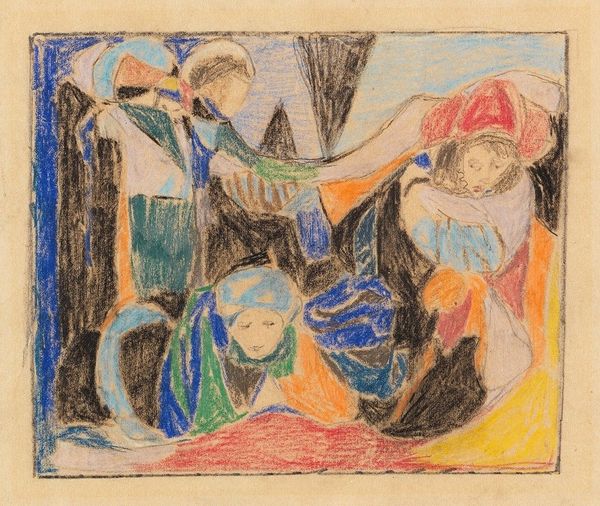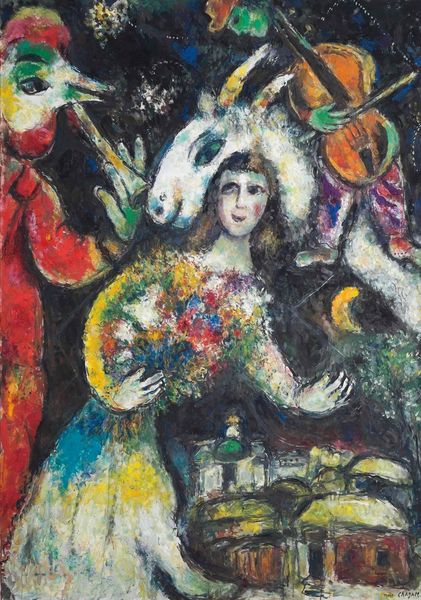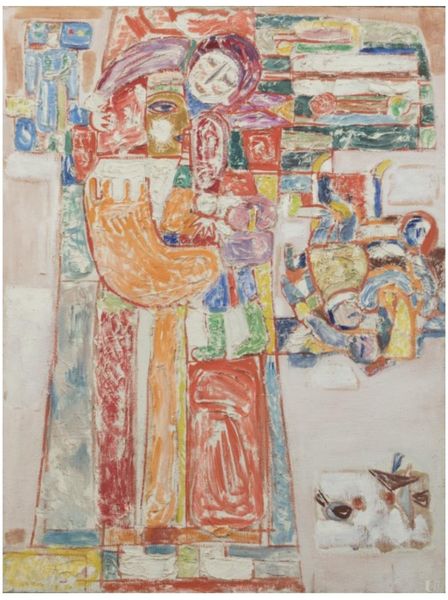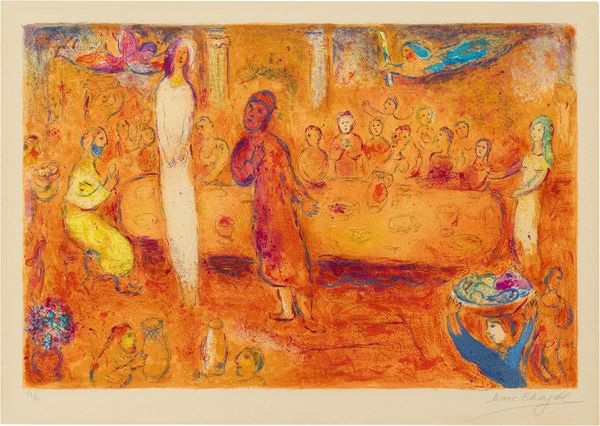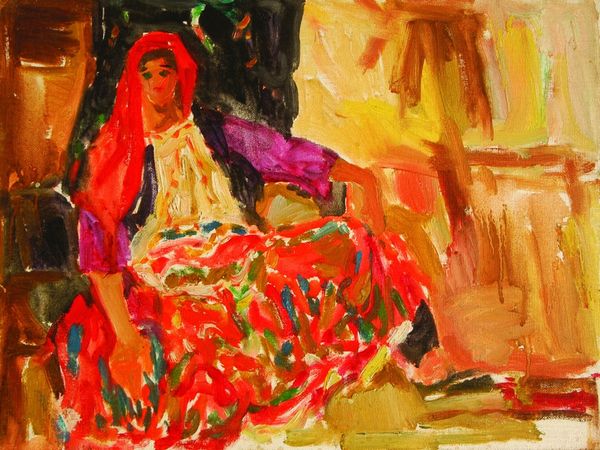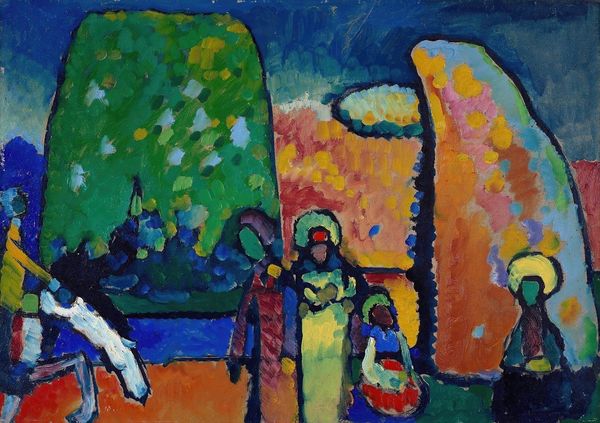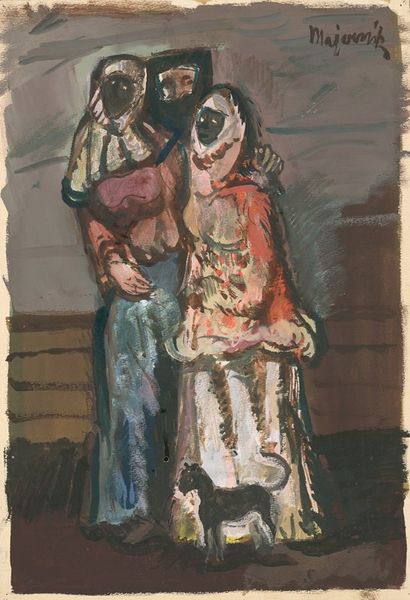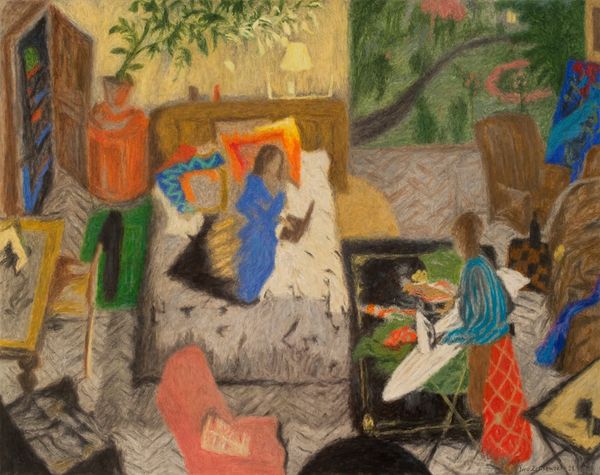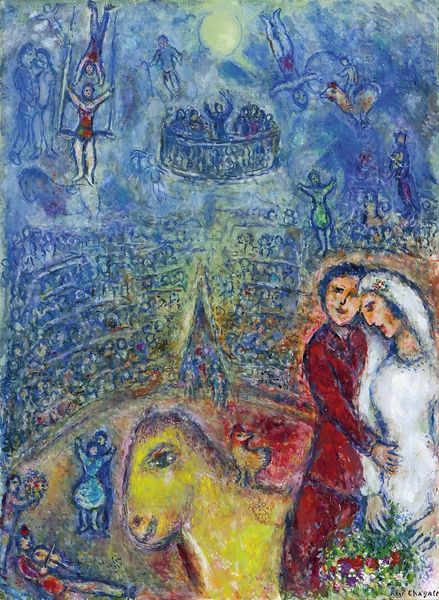
Copyright: Public Domain: Artvee
Curator: Looking at this artwork, the figures appear cloaked in shadow and vibrant pastel hues, giving off the feeling of a holy aura. What are your thoughts? Editor: It has a powerful, emotive charge, doesn't it? You feel that raw energy immediately. The colours seem to vibrate, especially that intense red and purple surrounding the central figure. Curator: It does, and let’s explore that further. What we are looking at here is “Religiöses Motiv”, a pastel drawing by Adolf Hölzel made around 1920. Now, knowing Hölzel’s focus on abstracting form to express spiritual themes, this becomes really interesting, particularly as religious and gendered archetypes played an immense role in shaping much of the social fabric in that era. Editor: Indeed. Notice how the artist used colour to emphasize certain shapes – a halo in shining yellow to emphasize divine essence for instance. You could look into the symbology of a color such as royal purple and relate it to historic connotations of privilege or deity throughout many world religions. Curator: Precisely! Also interesting is that, while overtly appearing religious, expressionist themes tend to grapple with subjective internal conflict and anxieties towards external political and cultural establishments, perhaps even gender relations in 1920’s Germany. Hölzel, I argue, engages in all of those layers, even as a male artist portraying gendered religious tropes such as the Virgin. Editor: These symbol-rich narratives that the picture plane suggests offer glimpses into Hölzel's time, but also reflect eternal themes regarding social order, spiritual and ethical dilemmas. In those colours we also notice a dialogue of the mundane vs. the numinous, the transient with the enduring. It's powerful. Curator: It's compelling how this pushes against straightforward representation, compelling the audience to decode a matrix of sociocultural values relevant to that time, through his perspective. Editor: Yes, but filtered and transmitted through a symbolic language that speaks to the ages. I walk away feeling uplifted. Curator: Indeed. It also calls on us to investigate modern societal reflections of traditional figures such as the mother or prophet through abstraction, through deconstruction of rigid, binary narratives.
Comments
No comments
Be the first to comment and join the conversation on the ultimate creative platform.


